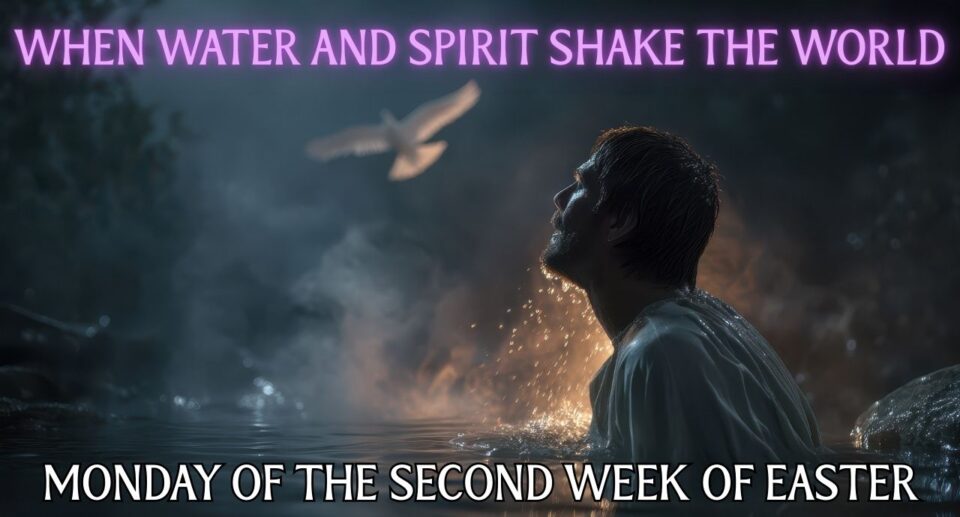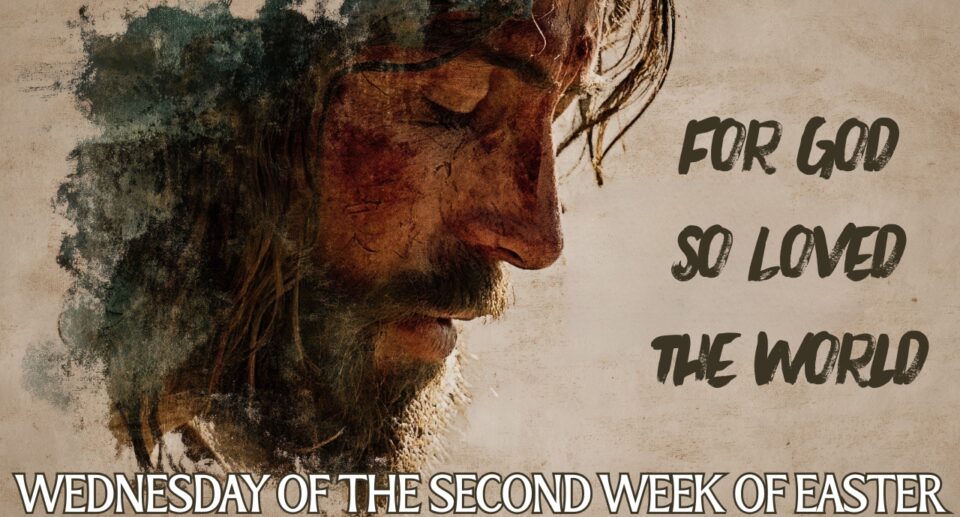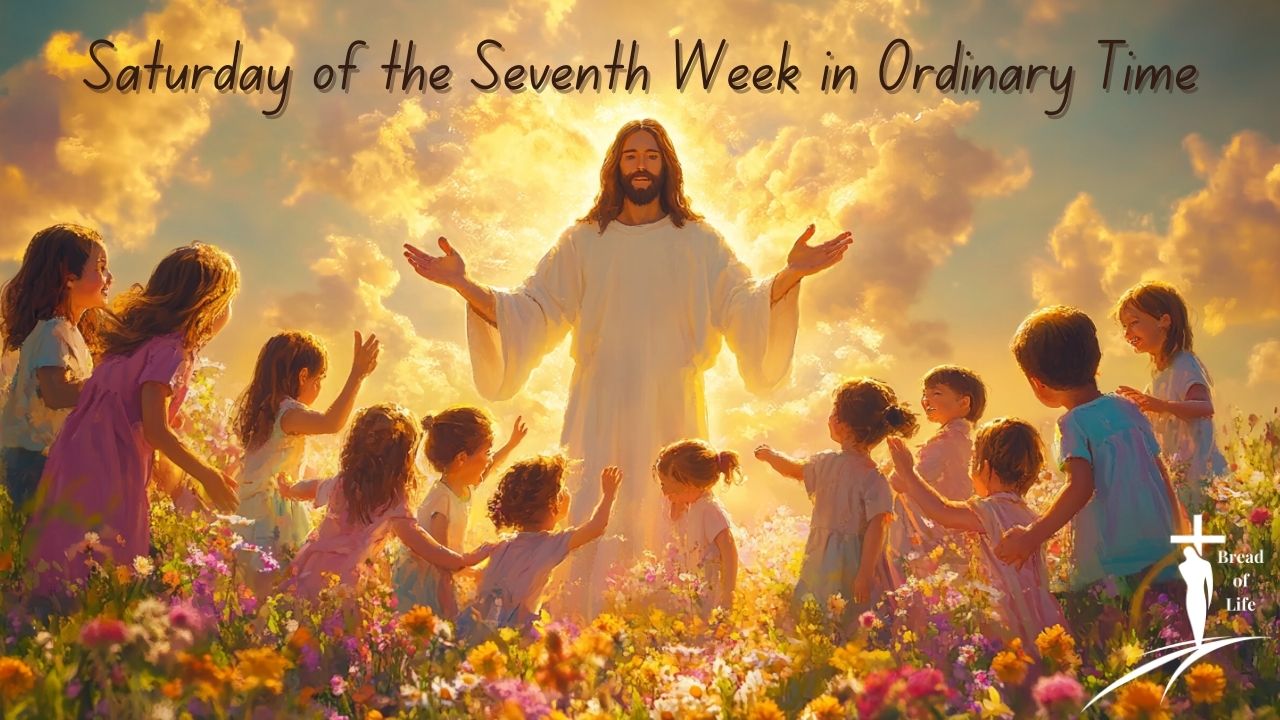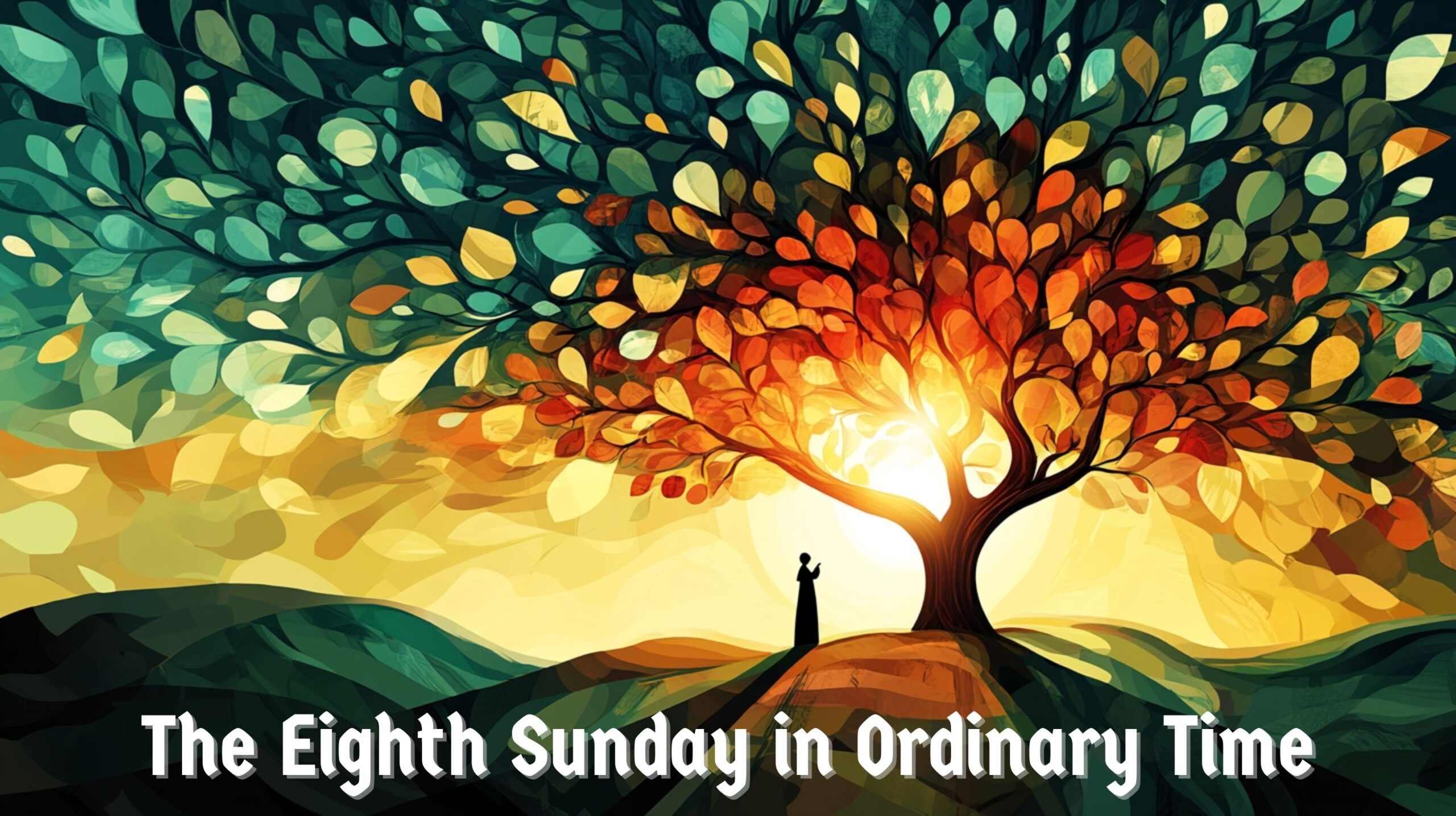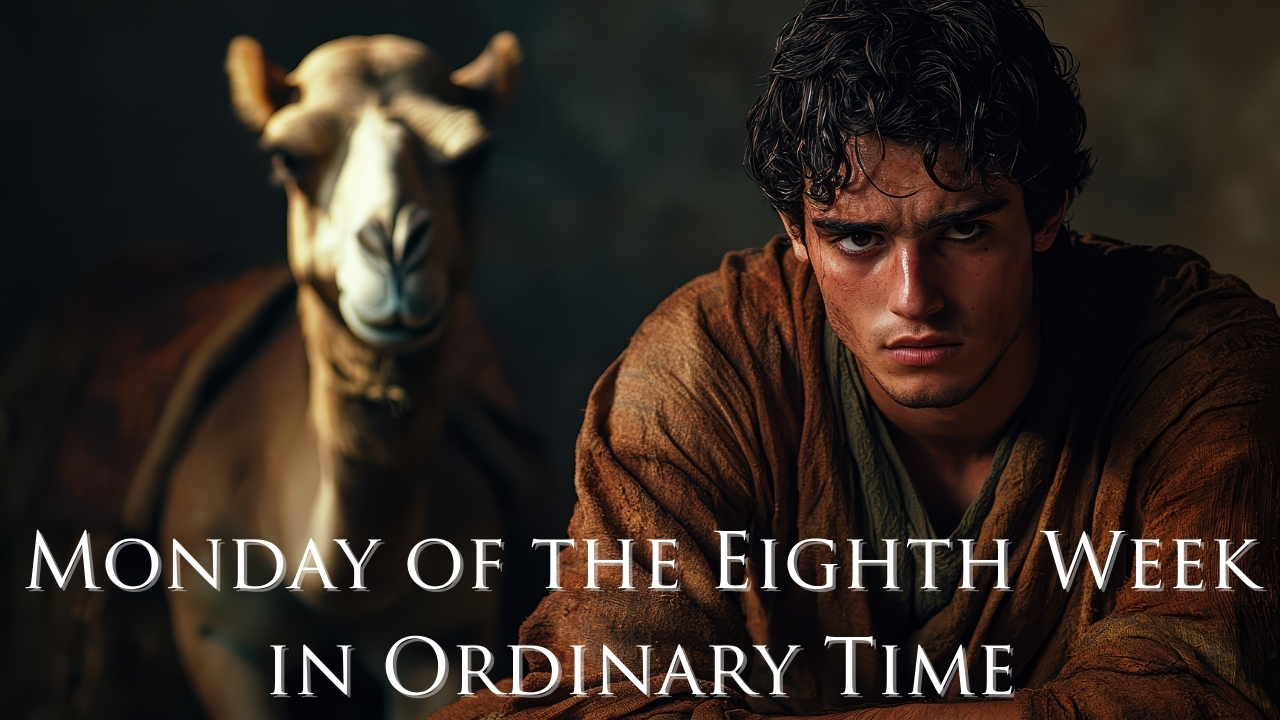Beyond Ownership: Living Resurrection Reality | Daily Readings | April 29, 2025

“No one claimed any of their possessions was their own.” Discover the revolutionary community described in Acts 4 where resurrection faith transformed their entire relationship with ownership and authority. This reflection explores how encountering the risen Christ led to radical generosity and community that still challenges us today.
Through this reflection, you’ll discover:
- Why the early Christians shared everything they owned
- How St. Catherine of Siena demonstrated resurrection authority
- What Jesus meant by being “lifted up” like Moses’ serpent
- Where resurrection faith might transform your own priorities today
Readings covered: Acts 4:32-37; Psalm 93:1ab, 1cd-2, 5; John 3:7b-15
Timeline: 00:00 Introduction 00:35 First Reading 03:10 Psalm Response 04:45 Gospel Reading 06:30 Reflection 17:20 Closing Prayer
Perfect for anyone questioning materialistic values, seeking authentic community, or wondering how resurrection faith might transform their relationship with possessions and priorities in today’s world.
#CatholicDailyReadings #ResurrectionCommunity #StCatherineOfSiena
Beyond Ownership: Living Resurrection Reality
“The community of believers was of one heart and mind, and no one claimed that any of their possessions was their own, but they had everything in common.”
Read that again. Let the radical nature of these words land fully.
No one claimed that any of their possessions was their own.
In our world of fierce individualism, where ownership defines identity and accumulation measures success, these words land like visitors from another dimension. They describe a community so thoroughly transformed by resurrection that the fundamental human drive to possess has been utterly reimagined.
This wasn’t communism imposed by governmental decree. This wasn’t socialism driven by political theory. This was voluntary, exuberant generosity flowing naturally from hearts that had glimpsed eternity. Having encountered the risen Christ, these believers suddenly recognized the temporary nature of ownership. Death had been defeated. The ultimate limitation had been overcome. In light of that reality, clinging to material security seemed almost comical.
The text continues with a vivid example: “There was no needy person among them, for those who owned property or houses would sell them, bring the proceeds of the sale, and put them at the feet of the apostles, and they were distributed to each according to need.”
Contemplate the scene. A property owner—someone of means and status in that society—sells valuable real estate and simply lays the money at the apostles’ feet. Not with reluctance. Not under compulsion. But with the liberated joy of someone who has discovered that ownership is ultimately an illusion in light of resurrection reality.
Barnabas exemplifies this transformed perspective. He sells a field and brings the money to the apostles. His generosity flows not from social pressure but from genuine conviction, so much so that the apostles give him a new name meaning “son of encouragement.” His individual choice strengthens collective witness.
Today we also celebrate Catherine of Siena, a 14th-century mystic whose life embodied similar resurrection-driven transformation. Born the 24th child in her family during the Black Death pandemic, this remarkable woman became advisor to popes and princes despite lacking formal education. Her authority flowed not from institutional position but spiritual authenticity.
Catherine famously said, “Be who God meant you to be and you will set the world on fire.” Like Barnabas, she discovered her true identity not in possession or position, but in radical surrender to divine purpose. Despite her humble origins, she boldly confronted corruption in the church, challenging even Pope Gregory XI to reform. When plague ravaged Siena, she didn’t retreat to safety but ministered to the sick when others fled.
What connects the early Christian community and Catherine across a millennium? Both demonstrate how resurrection faith transforms not just private beliefs but public engagement. Both show how encountering eternity changes our relationship with temporality.
Our psalm reinforces this theme: “The LORD is king, in splendor robed… Your throne stands firm from of old.” When we truly grasp God’s sovereignty—that the One who conquered death reigns eternally—everything else shifts accordingly. Material possessions, social status, political divisions all assume their proper, lesser place. What looks immovable from human perspective becomes relatively insignificant when viewed from “the throne established from of old.”
In the Gospel, Jesus continues his nighttime conversation with Nicodemus. Having explained the necessity of being “born from above,” he now addresses Nicodemus’ continued confusion: “You must be born from above. The wind blows where it wills… so it is with everyone who is born of the Spirit.”
Jesus contrasts earthly things with heavenly things, then makes a statement that connects directly to both Acts and Catherine’s life: “Just as Moses lifted up the serpent in the desert, so must the Son of Man be lifted up, so that everyone who believes in him may have eternal life.”
This reference recalls when snake-bitten Israelites were healed by looking at a bronze serpent Moses raised on a pole. Jesus parallels this with his coming crucifixion—he will be “lifted up” so those who look to him in faith find life.
This “lifted up” imagery illuminates both the early church’s radical sharing and Catherine’s countercultural influence. The crucified and risen Christ, once truly seen, transforms everything. Material possessions lose their grip. Social conventions lose their power. Death itself loses its sting. The One “lifted up” lifts us into new priorities and possibilities.
The question isn’t whether this vision of community is practical by modern standards. The question is why our vision has become so constrained. The early Christians weren’t implementing an economic theory. They were living as if death had actually been defeated—because in their experience, it had been. The empty tomb changed everything, including their relationship with possessions.
What might this mean for us today?
First, these readings challenge our individualism. Contemporary culture celebrates autonomous self-determination—finding your truth, living your story, pursuing your dreams. Acts presents a radically different vision: believers sharing one heart and mind, understanding life as fundamentally communal rather than individual.
This doesn’t erase personal identity but locates it within community shaped by resurrection reality. Catherine embodied this tension beautifully. Intensely individual in her mystical experiences, she nevertheless understood herself as part of the Body of Christ. Her famous dialogue with God includes the line, “You are she who is not, and I am He who is.” This profound humility didn’t diminish her but freed her from self-preoccupation into genuine community.
Second, these readings question our relationship with possessions. Acts describes believers selling property and sharing proceeds according to need. Few contemporary Christians practice such radical economics. Yet the underlying principle—that material goods ultimately belong to God and should serve human flourishing—remains challenging in our consumer society.
Catherine took this principle seriously, giving away food and clothes despite family opposition. But her most radical sharing wasn’t material but spiritual—offering her very life for Church renewal. Like the early Christians, she understood that resurrection faith relativizes everything else.
Third, today’s readings reveal how resurrection generates unexpected authority. The apostles wielded “great power” in their testimony despite lacking formal credentials. Catherine advised popes and reconciled warring cities despite being an uneducated woman in patriarchal times. Their authority flowed not from institutional position but from evident connection to the risen Christ.
This pattern continues wherever resurrection faith takes root. From desegregation leaders in the American South to anti-apartheid activists in South Africa, from those serving vulnerable populations to those confronting embedded corruption, authentic spiritual authority often emerges from unexpected quarters when people truly grasp that the crucified one has been “lifted up” in victory.
These readings aren’t primarily about economic systems, though they have implications for them. They’re about what happens when resurrection becomes more than religious doctrine—when it becomes lived reality that transforms priorities, relationships, and engagement with the world.
The early Christians shared everything because death-defeated-by-resurrection changed what they valued. Catherine advised popes because Christ-lifted-up gave her authority transcending conventional hierarchies. Barnabas sold his field because belonging to the community of resurrection meant more than private ownership.
These examples aren’t meant to induce guilt but to invite imagination. What might contemporary resurrection community look like? Not forced conformity to external rules but genuine unity of heart and mind? Not identical expression but authentic participation in shared reality?
Perhaps it looks like churches where wealthy professionals and homeless individuals genuinely know each other’s names and stories. Perhaps it looks like neighborhoods where childcare, meals, tools, and transportation are naturally shared across household boundaries. Perhaps it looks like political engagement that transcends partisan divisions because allegiance to the risen Christ proves stronger than allegiance to temporal power structures.
Acts doesn’t present this unity as achieved through special technique or extraordinary people. It flowed naturally from ordinary people who had encountered the extraordinary reality of resurrection. They were simply living out the implications of what they had witnessed—that death had been defeated, that love was stronger than the grave, that material security was relatively insignificant compared to belonging to the community of those “born from above.”
The same invitation extends to us this Easter season. Not to copy first-century economic arrangements or medieval mystical practices, but to allow the central reality of resurrection to transform how we live in our own time and place. To look upon the One “lifted up” and find our priorities, perspectives, and possibilities fundamentally rearranged.
Catherine wrote, “Start being brave about everything… Don’t look at your weakness, but realize that in Christ crucified you can do everything.” This courage flows not from self-confidence but from gazing upon the lifted-up Christ and allowing that vision to transform everything else.
Like the early believers who were “of one heart and mind,” like Barnabas who sold his field, like Catherine who advised popes, may we discover what happens when resurrection becomes not just doctrine we affirm but reality we inhabit.

